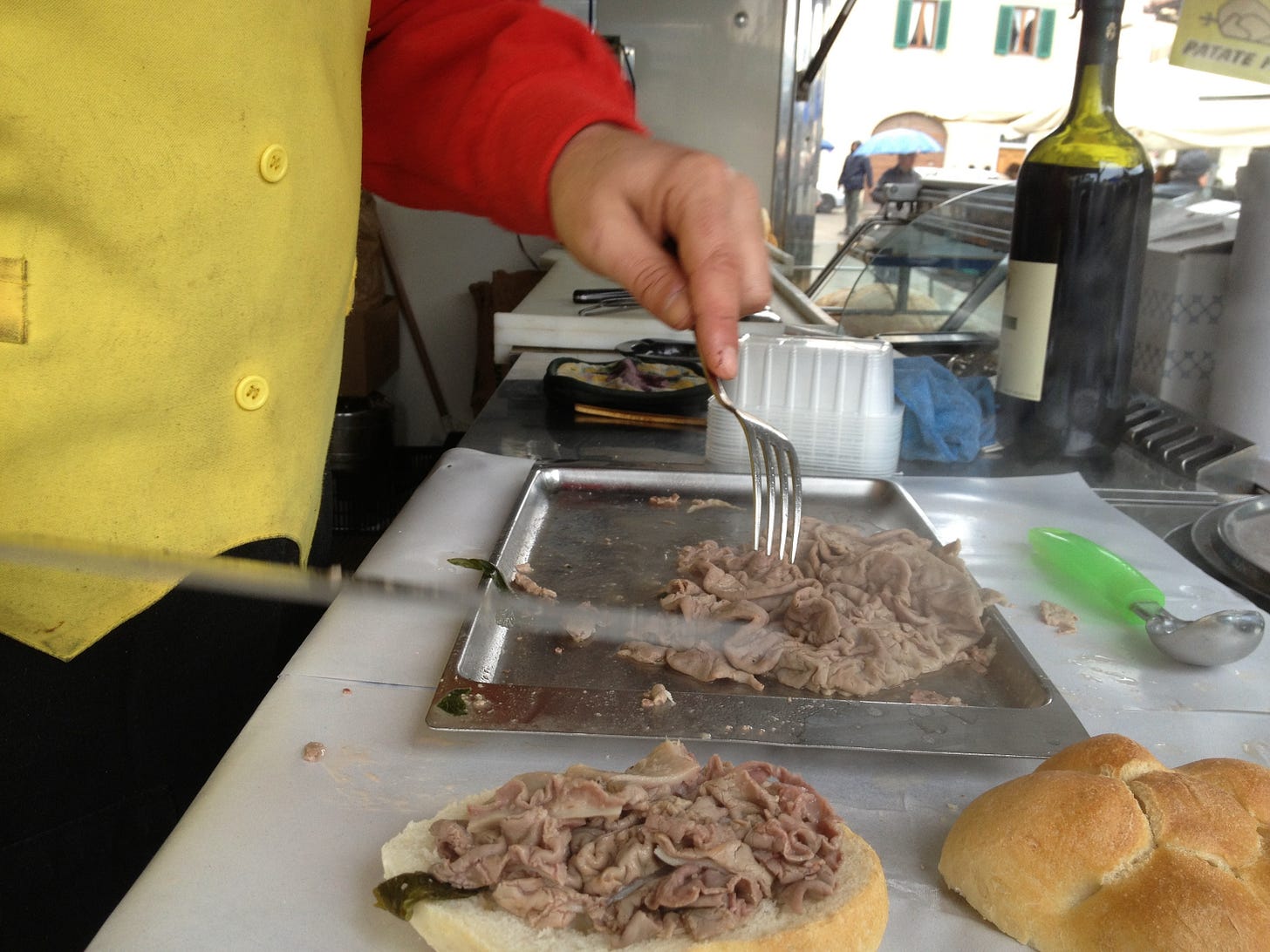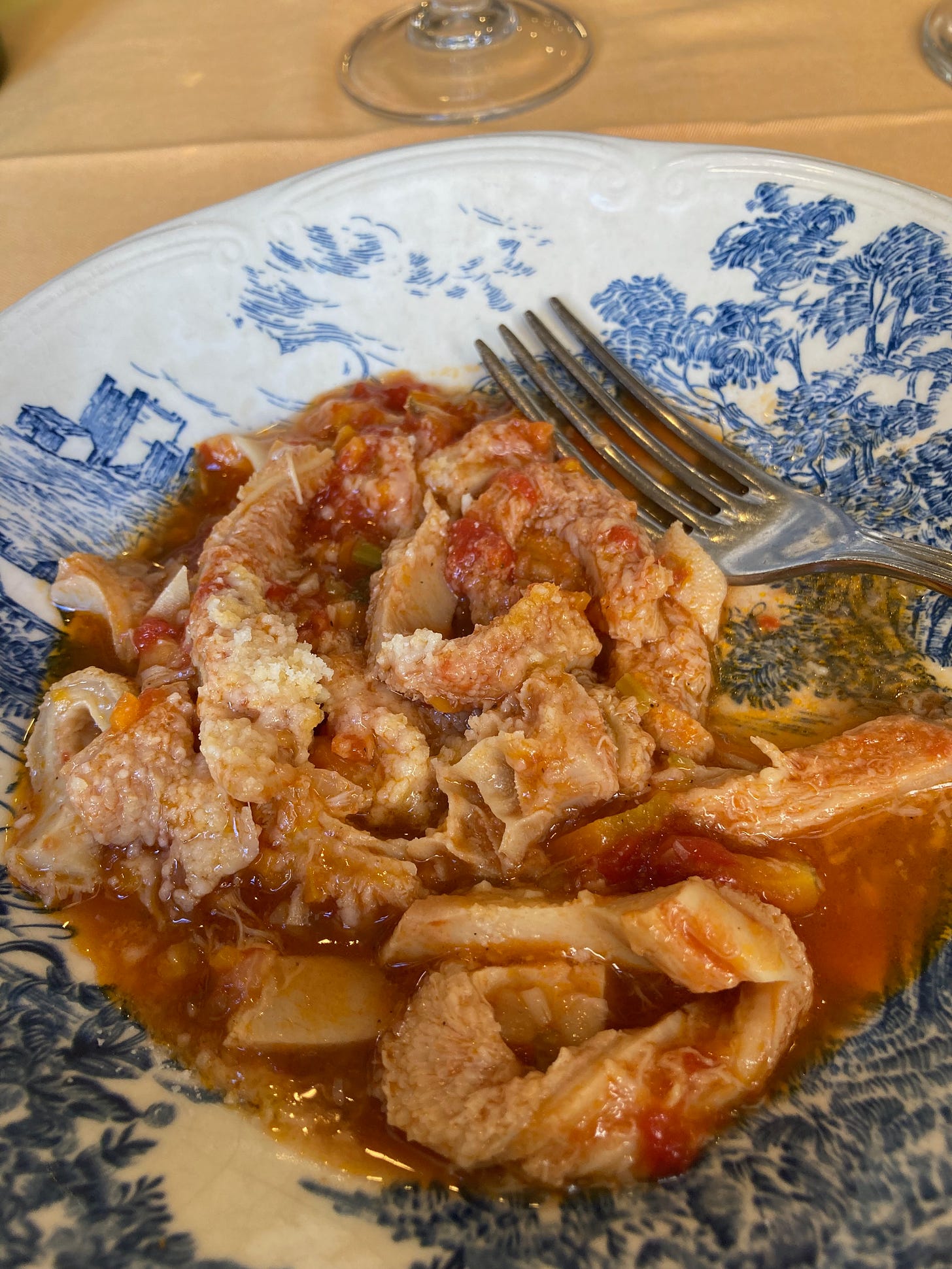TUSCAN WINTER. . . .
Two or Three Ways of Looking at a Season, with Recipes
Speaking of winter—were we speaking of winter?—how come I’m not in Italy for the coldest months of the year? How come I’m in Maine, suffering the snows and blows of the season?
The answer is simple: in Maine folks know how to deal with winter. In Tuscany, not so much, despite several millennia of experience. Think of this: when I rebuilt my falling down stone cottage in the mountains of eastern Tuscany, the workers hadn’t a clue about how to build a fireplace that wouldn’t smoke. “È un miracolo, signora,” they said, “it’s a miracle.” In other words, don’t ask, just pray.
My neighbors in our mountain village have a different solution: pin a stiff piece of oilcloth all along the mantle to hang down a good two or three feet above the fire and hopefully deflect the smoke out of the room and back up the chimney. It was a solution of sorts, though it didn’t always work.
One thing Tuscans do know, however, is how to eat in winter. When the tramontana blows down from the north and the snow swirls outside the farmhouse and the folks inside gather around the smoky hearth, Tuscans tuck into big pots of beans and salted meat and the cheap cuts from the butcher that are so packed with flavor that you don’t mind a bit of a chew to get at it.
This photograph showed up on my Facebook feed this week, posted by Claudio and Daniela Lunghini, the brother-sister team who together run Minimarket Lunghini in Campaccio, a tiny hamlet below the walls of Cortona. It’s where I shop for fine cheeses, good wines, local meats butchered with commanding authority by Claudio, salumi often made in-house, specialty pastas (brands like Rustichella and Cavalieri that are hard to find in Italy where everyone seems to subsist on Barilla), British teas and Swiss chocolates (the clientele is international), and above all for daily offerings of prepared food, much of which is made in the home kitchen of Mamma Lunghini. This could mean a gossamer-layered lasagna, or chicken roasted with rosemary-flecked potatoes, or hearty, bean-blessed ribollita, or a pork ragù made with locally raised Cinta Senese, the finest kind of pig. Or a tripe or oxtail stew, as above.
This array of prepared dishes is what Italians call a tavola calda. It exists in one form or another all over Italy, a boon to working women, hungry bachelors, and anyone who wants to provide something warm, filling, delicious, and above all genuino to the hungry folks at home. In the photo you see two DOC (denominazione di origine controllata, a government seal of approval for wine, often used semi-jokingly to indicate The Real Thing) guaranteed Tuscan dishes, trippa (tripe) and coda alla vaccinara (oxtail), heart- and body-warming winter stews that fend off the cold admirably and moreover use parts of the beast that we Americans discard, or worse, turn into pet food. It’s also incontrovertible evidence that Tuscans know how to weather winter. Even though there, as here in Maine where I write, winter is not what it used to be. Right now, in both places, it is creeping along to the end of a very mild season and the previsione says ten days of rain ahead.
Normally, though, if normal ever returns, rain, chill, grey skies, ice and even snow, all is made bearable by the fragrance coming from kitchens where these stews are simmering. In the old days, I’m told, it could well have been one stew that was kept going all winter long with additions from day to day of stored vegetables (squash, potatoes, carrots, dried mushrooms, tomatoes from the jars that were put up in September, sometimes a slice of prosciutto, a ham bone, or a piece of salt-cured lardo, whatever was available to add flavor to the mix). Admittedly, this may be an apocryphal vision extolling the peasant kitchen, but I like the idea. I picture a clean cloth on the scrubbed kitchen table, a warming fire on the hearth, the old folks huddled on stone benches built right into the fireplace, and a savory tripe stew or an oxtail ragu bubbling on the gas range. Outside there are ducks cavorting in the rain and chickens huddled under the dripping branches of the big old maple in the yard. Inside all is toasty warm, dry, and deliciously fragrant.
Trippa alla fiorentina
These tripe dishes are not just emblems of the farmhouse kitchen, however. Even in super-chic Florence, the Tuscan capital, tripe is an emblem of civic pride, a beloved street food, sold from carts in markets and on well-frequented corners where workers go for a panino di lampredotto to have with their lunch.
And it’s a dish served without condescension in most of the city’s restaurants. At Trattoria I Due G, near the Santa Maria Novella train station, I had the classic dish, perfect for a gloomy, rainy winter day.
And then away to the south in Montepulciano, at La Grotta, another favorite right across from the magnificent San Biagio church, I was given tripe as an antipasto, served on crostini and topped with very thin shavings of lardo that melted slightly in the heat of the trippa itself. (Alas, I’ve just learned that La Grotta has been sold. It was a treasure of Tuscan traditional cuisine with an urbane verve and style all its own. I shall miss it fiercely.)
Whenever he felt homesick, he baked his version of trippa alla fiorentina in his backyard bread oven.
Lampredotto and trippa are but two of the four stomachs of the cow but I don’t want to go too deeply into that. Although you probably won’t make it, I think a recipe is called for, this one from Angelo Pellegrini, whom I mentioned in an earlier post here. Angelo emigrated from Tuscany to the U.S. state of Washington as a small child; when I met him in the 1980’s, he was an emeritus English professor at the University of Washington. But he never forgot his Tuscan roots. He kept a Tuscan orto, or vegetable garden, he had a bread oven in his back yard in which he also roasted rabbits that a friend raised for him, and he made wine every fall from grapes shipped to him by his old pal Robert Mondavi. And whenever he felt homesick, he baked his version of trippa alla fiorentina. (Scroll down for the recipe.)
Another Tuscan winter memory
On a chilly winter Sunday when the Tuscan weather typically can’t decide between sunshine or rain and so gives us a bit of both, Panzano in Chianti is lively, bustling with locals as well as tourists who come down the Strada Chiantigiana, the old road from Florence to Siena that bisects the town. It’s market day in Panzano and the produce vendors are out in force, the bakery, with its wood-fired oven, is open and flourishing, and so is the Antica Macelleria Cecchini, possibly the most famous butcher shop in Italy, if not in the entire world. This is where Dario Cecchini holds forth, occasionally spouting Dante as is his wont, or blowing a bugle fanfare when someone he knows and especially likes arrives to purchase one of the renowned chianina bistecche, the traditional porterhouse, beloved of Tuscan gourmets when grilled over the coals of an oakwood fire.
Paid subscribers will find more below, including Tuscan recipes for Dario’s Tenerumi in Insalata, a robust beef-and-vegetable winter salad, and Angelo Pellegrini’s Trippa alla Fiorentina.
Keep reading with a 7-day free trial
Subscribe to On the Kitchen Porch to keep reading this post and get 7 days of free access to the full post archives.






